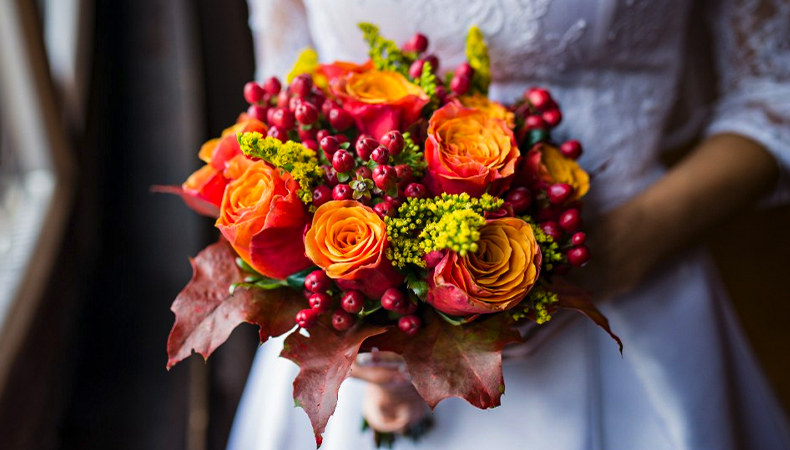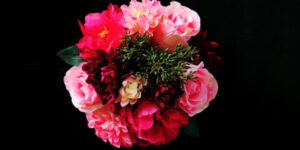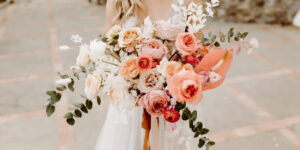Every season of the year is lovely in its own way, but autumn is particularly lovely since it is the season when the heat of the summer is past and nature is changed by vibrant hues. Nature has no bad weather, as the saying says, so with careful preparation and coordination, any flaw can become the highlight of your celebration.
An autumn wedding allows for more creative décor, especially when it comes to the bridal bouquet, which serves as one of the ceremony’s key decorations. Using both traditional floral arrangements and novel arrangements of flowers, leaves, berries, and other plant components, you may make true works of art thanks to the enormous diversity of colors and their shades.
When planning an autumn wedding, you might be concerned that there won’t be enough flowers for the bouquet because so many plants are in bloom by that time. You can use the seasonal flowers listed in this article for your autumn wedding.
Lily of the Incas (Alstroemeria)
Due to their unusually “spring” colors at this time of year, the delicate alstroemerias will provide variety to your wedding palette.
Amaranth
First of all, an autumn wedding design looks stunning when using amaranthus’ deep color. Second, its shape alone will undoubtedly be useful for adding volume and a unique flair to a bouquet or floral arrangement. Amaranth will look particularly cool in the archway and on hung floral arrangements.
Calla
Calla lilies are the ideal choice for a mono-bouquet for an elegant wedding. They appear quite autonomous and finished and don’t need any additional flowers or greenery to complete the picture.
Celosia
Due to its regularity and lushness, celosia is frequently used as a background or a color accent. And even though сellosia monobouquets are uncommon, they have a very striking, vibrant, and autumnal appearance.
Chrysanthemums
These flowers, which stand in for the sun and are lush, big, and bright, will do well for an autumnal wedding. Roses, dianthus, and alstroemeria go great with chrysanthemums, and they also look stunning in a monobouquet.
Gerbera
The colour pallet of this flower is absolutely enormous, ranging from delicate pastels to rich bright hues, thus gerberas may be used in the bridal floristry with any color scheme.
Marigold
We used to underestimate the marigolds, imagining them only in urban flowerbeds or cottage gardens. However, they can be used in wedding decorations, especially in the yellow-orange fall palette. Marigolds look good not only in a bouquet but also perfect for bright garlands.
Wild pansy
Wild pansies aren’t the best choice for making a monobouquet or huge compositions for the table center because of their modest size. However, they will look fantastic when used for wedding polygraphy, cake decoration, and seating arrangements.
Yarrow
Although lush yellow yarrow is not likely to be the centerpiece of your bouquet, it is fantastic in the supporting role and adds a vibrant touch. The color scheme is diverse, ranging from bright yellow and scarlet to white and pastel colors.
Sneezeweeds
A pretty autumn flower with a large ball-shaped center. Sneezeweeds make a beautiful autumn wedding bouquet due to their red and orange hues.
Dahlia
Even as the first severe cold sets in, hardy frost-resistant dahlias can be used. If your wedding is planned for November, when frosts may form, take them into consideration.
Snapdragons
You might still have time to include snapdragons into your September or October wedding décor since they bloom throughout the summer and into mid-autumn. The plant will look as fashionable on its own as well as in a bouquet in the compositions on the tables. You can use the height of the snapdragons, which ranges from 50 to 80 cm, to visually “stretch” the bouquet.
Nasturtium
The bride’s bouquet or other floral arrangements will benefit greatly from the inclusion of delicate curly nasturtium. Its long, floppy stems will give a touch of relaxation and ease.
Gladiolus
The gladiolus, which resembles a sword, takes its name directly from the Latin for this weapon. Due to its height and length, this is a pretty huge bloom that might not work well in a bouquet. So it is better to use it in vertical floral arrangements to visually elongate them and add lushness.
Narcissus
The narcissus bloom consists of six white, orange, or yellow leaves with a bright “crown” in the center. Narcissus are winter-resistant and perfect for a bouquet for an October bride.
Freesia
Freesia, which came from South Africa, is one of the most fragrant flowers. The most popular color is white, although it also comes in red, pink, yellow, and orange. Freesia shouldn’t be used in centrepiece compositions due to its overpowering perfume, which can come across as invasive.
Zinnia
It is one of the least showy flowers. Your bridal bouquet might be brightened up thanks to the zinnia’s charm. This flower not only has a lovely appearance, but it also has a significant meaning—it stands for enduring love.
Larkspur
Blue, white, and purple larkspur blooms are gathered in a pyramidal inflorescence on a long peduncle. They are always appealing and uniquely lovely. In certain kinds, the flowers inside sprout several tiny, contrasting petals. Provence-style weddings go nicely with larkspur because it represents wellbeing.
Phlox
Perhaps because they represent the “union of souls,” phloxes are a favourite among brides from all nations. Large, lush inflorescences of white, orange, pink, red, purple, and even blue blooms with a lilac and meadow carnation scent are composed of little blossoms.
A wedding in the autumn is a riot of vibrant autumnal hues and arrangements. You can make use of openwork umbrellas, blankets, baskets, fur, or floral capes. Everything is excellent and gorgeous. Your party will be transformed into a fairy tale with the help of well-constructed narratives, and your wedding images will serve as a treasured reminder and source of pride for future generations. Love, be married in the autumn, and be happy!
Bio:
Helen Wilson is a freelance content writer. Her main spheres of specialization are Productivity and Self-development. She also studies topics about psychology and health and provides a “pay to do essay” service for students.




![A Guide to Incorporating Bright Wedding Colors [2024] A Guide to Incorporating Bright Wedding Colors [2024]](https://www.happywedding.app/blog/wp-content/uploads/2024/07/How-to-Incorporate-Bright-Colors-into-Your-Wedding-300x150.jpg)


